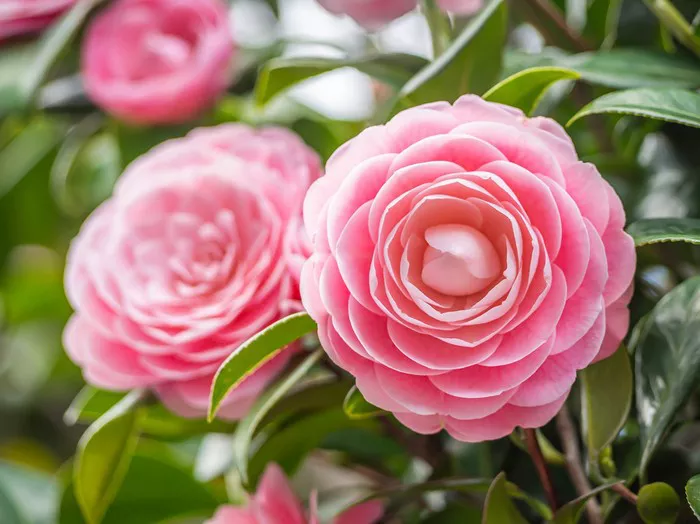In the realm of gastronomy, the exploration of novel ingredients is a perpetual pursuit. Camellia flowers, often celebrated for their aesthetic allure in gardens and floral arrangements, have recently piqued the curiosity of culinary enthusiasts. Beyond their ornamental value, these flowers offer a potential culinary adventure. In this article, we delve into the edibility, nutritional value, and the art of incorporating camellia flowers into delectable recipes.
Edibility of Camellia Flowers
Camellia flowers, belonging to the genus Camellia, encompass a diverse range of species, many of which are cultivated for their beauty rather than their culinary utility. However, certain varieties, such as Camellia sinensis, hold promise as an edible delicacy.
Traditionally, in regions like China and Japan, camellia flowers have been utilized in culinary practices. The petals are often pickled or used to infuse flavor into various dishes. However, it is crucial to exercise caution when consuming camellia flowers, as not all species are safe for consumption. Some species contain toxins, and it is imperative to identify the specific variety before incorporating them into recipes.
When considering the edibility of camellia flowers, it is advisable to rely on expert guidance or consult reliable sources to ensure safety. Additionally, harvesting flowers from pesticide-free environments further enhances their suitability for consumption.
Nutritional Value of Camellia Flowers
Camellia flowers, like many edible blossoms, boast a nutritional profile that adds both flavor and substance to culinary creations. While specific data on the nutritional composition of camellia flowers may be limited, they offer several potential health benefits.
1. Rich in antioxidants: Camellia flowers contain polyphenols and flavonoids, known for their antioxidant properties. These compounds help combat oxidative stress and inflammation within the body, promoting overall health and well-being.
2. Vitamins and minerals: Like other edible flowers, camellia blossoms may provide essential vitamins and minerals, albeit in varying concentrations depending on the species. These nutrients contribute to various physiological functions, including immune support and metabolic regulation.
3. Low in calories: With their delicate petals and subtle flavor, camellia flowers offer a low-calorie addition to dishes, making them suitable for individuals mindful of their caloric intake.
While camellia flowers may not serve as a primary source of nutrition, their inclusion in culinary endeavors adds depth to both flavor and nutritional diversity.
Recipes Featuring Camellia Flowers
Incorporating camellia flowers into recipes invites creativity and experimentation, elevating dishes with their floral essence and visual appeal. Below are several inspired recipes showcasing the versatility of camellia flowers:
1. Camellia Flower Salad with Citrus Dressing:
- Ingredients: Fresh camellia flowers, mixed greens, citrus fruits (such as oranges or grapefruits), olive oil, lemon juice, honey, salt, and pepper.
- Method: Toss mixed greens with thinly sliced citrus fruits and fresh camellia flowers. Whisk together olive oil, lemon juice, honey, salt, and pepper to create a vibrant dressing. Drizzle over the salad and garnish with additional camellia petals.
2. Pickled Camellia Flowers:
- Ingredients: Fresh camellia flowers, rice vinegar, sugar, salt, and spices (such as coriander seeds or peppercorns).
- Method: Sterilize a glass jar. Combine rice vinegar, sugar, salt, and spices in a saucepan and bring to a simmer. Allow the brine to cool slightly. Place fresh camellia flowers in the jar and pour the brine over them, ensuring they are fully submerged. Seal the jar and refrigerate for several days before enjoying the pickled flowers as a tangy accompaniment to savory dishes.
3. Camellia Flower Infused Tea:
- Ingredients: Dried camellia flowers, hot water, optional sweetener (such as honey or agave syrup).
- Method: Place dried camellia flowers in a teapot or infuser. Pour hot water over the flowers and allow them to steep for several minutes. Strain the infusion into cups and sweeten to taste, if desired. Serve hot for a soothing floral tea experience.
These recipes represent just a glimpse into the culinary possibilities offered by camellia flowers. From salads to preserves to beverages, the delicate blooms lend themselves to a myriad of culinary applications, limited only by the imagination of the chef.
Conclusion
In conclusion, the exploration of camellia flowers in the culinary sphere unveils a realm of possibility and creativity. While their edibility must be approached with caution and knowledge, their nutritional value and potential for culinary innovation make them a captivating ingredient for adventurous cooks. Whether enjoyed fresh in salads, preserved in pickles, or infused in teas, camellia flowers offer a delightful sensory experience that transcends the boundaries between garden and kitchen. As we continue to uncover the culinary treasures hidden within nature’s bounty, let us embrace the beauty and flavor of camellia flowers with enthusiasm and reverence.


